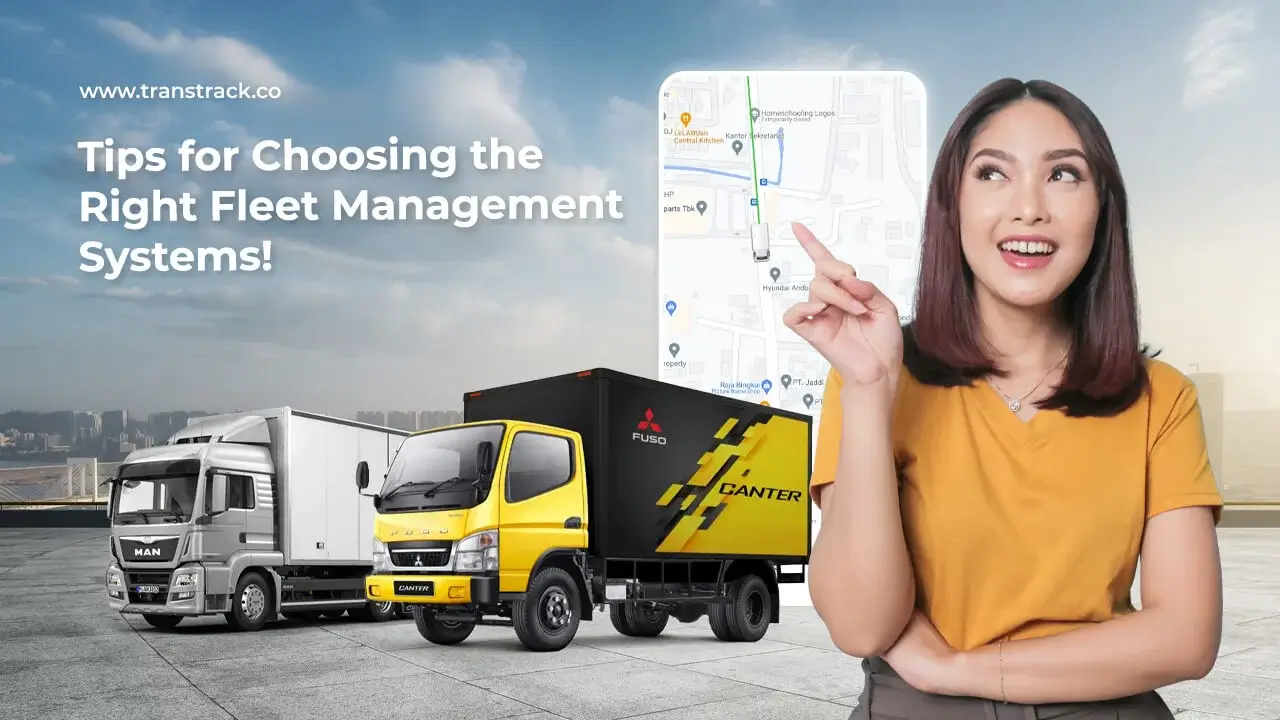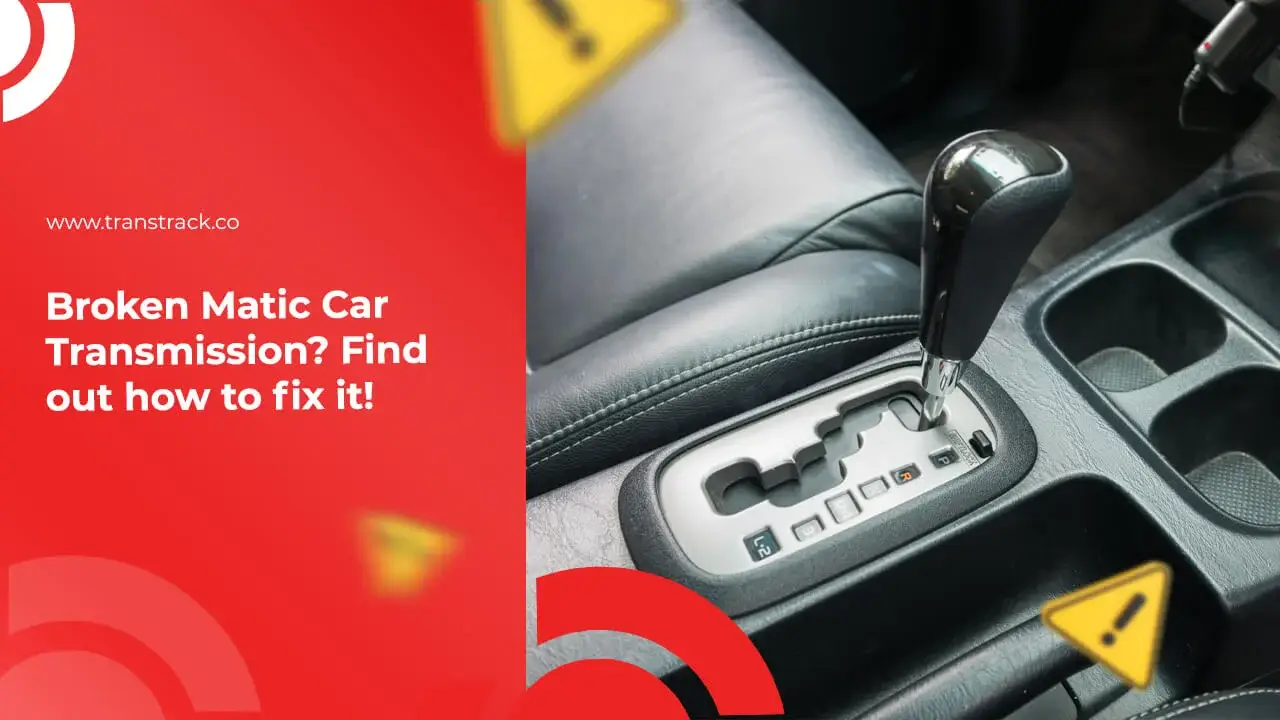Tips for Choosing the Right Fleet Management Systems!

Fleet Management Systems have a variety of solutions on the market, it can be difficult to choose the one that is best for our business needs.
A good Fleet Management software should not only offer key features, but should also be easy to use, easy to integrate with other applications and systems, and regularly provide updates and new features. Let’s take a closer look at the tips for choosing a good Fleet Management System.
Tips for Choosing Fleet Management Systems
As a Fleet Manager, knowing how efficiently our fleet is running can sometimes be a challenge. Fleet Management Systems can help by giving us access to clear and actionable data about vehicles across our fleet. Fleet Management Systems is software that provides data-driven insights on GPS vehicle tracking, Hours of Service (HOS), safety, upcoming vehicle maintenance, and more. The software is designed to ease the burden on Fleet Managers – by helping to reduce costs, streamline workflows, and automate more processes in our fleet operations. Here are tips for choosing Fleet Management for your fleet!
1. Ease of use with Fleet Management Systems
Fleet Management Systems software should allow us to improve the efficiency of fleet operations and help in saving time. This means the Fleet Management Systems software we choose should be easy to install, intuitive, and allow us to quickly access the information we need. TransTRACK Fleet Management solution, for example.
The data collected by Vehicle Gateway is then presented in an easy-to-use dashboard, where Fleet Managers can check the location of their vehicles, notify drivers of changing traffic conditions, and access reports such as Route Analytics reports to analyze routes.
2. Integration of Fleet Management Systems
Fleet Management Systems solutions that allow us to integrate multiple systems can help ensure that we don’t miss out on important information.
TransTRACK offers an open API that makes it easy to integrate with third-party tools for routing, invoicing, HR software, and more. If we already use routing software, then we can easily integrate it with TransTRACK’s Fleet Management Systems software. TransTRACK will then automatically import our routes, allowing us to analyze planned route performance (using the Routes Planned vs. Real Report), investigate driver performance, and more.
This gives us a consolidated view of all data relevant to our fleet operations, allowing for a greater level of visibility and control with minimal manual intervention.
3. Data insights on Fleet Management Systems
While implementing Fleet Management Systems can give us access to a lot of useful data about our fleet, sometimes the sheer volume of data without context can be overwhelming. It’s important to find a Fleet Management solution that can help interpret that data and make it actionable.
A number of telematics providers capture information on vehicle health, location, and maintenance needs, but TransTRACK presents that data through intuitive and easy-to-use dashboards. These dashboards allow us to view and sort data to answer any questions we may have about our fleet.
We can use the dashboard to see how many hours each driver has when planning job assignments, set custom alerts to notify us if a driver goes over a set speed limit, or use tags to easily filter our reports. For example, if we run a nationwide delivery company, we can tag specific vehicles or assets by city or region. These tags will then make it easy to filter and view our data, allowing us to track assets or compare different areas.
If safety is our priority, TransTRACK also provides Fleet Managers with a Safety Inbox to help minimize safety-related workflows. This is where we can find a list of all safety-related incidents collected by TransTRACK dashboard cameras and Vehicle Gates as well as review the footage associated with each event. we can then choose to close the event or flag it for follow-up action, such as training drivers who exhibit dangerous behavior.
4. Driver mobile apps
Our drivers are always on the go but they are still responsible for completing key tasks before, during, and after their trips. This also includes managing their Hours of Service and ensuring that they are on track to make deliveries on time.
It can be helpful to look for telematics solutions that offer mobile apps that allow our drivers to access the information they need while they are on the road.
Let’s say, for example, we’ve just gotten an urgent job. Using the TransTRACK dashboard, we can quickly see the location of all our vehicles, and assign the job to the nearest driver.
Drivers are then notified of new jobs, along with any traffic or route updates, via the TransTRACK Driver App and can plan accordingly. Drivers can also use the Driver App to create task logs, access Hours of Service records, and view their safety scores.
TransTRACK’s intuitive dashboard and integrated suite of products help Fleet Managers keep their fleet compliant and give them greater visibility into their day-to-day operations.
What Features do we Need in a Fleet Management Software?
Once we’ve established a rough scale and budget, we can get into the fun part: what we get out of it. These features fall into several categories:
- Vehicle Management
- Driver Management
- Incident Management
- Tracking
Vehicle management features are the most immediately noticeable thing for Fleet Management software. These include maintenance records, registration and tax information, and more. These advanced tools can include vehicle cost analysis and disposal assistance. It is great to be able to ensure regulatory and functional standards are met. Adhering to these standards will help our fleet run smoothly and in compliance.
Driver management, as the name suggests, focuses on organizing our team members and everything that comes with them. It can handle licensing and penalty management. Those who pool their vehicles among drivers can often find tools to help with such logistical issues.
Driver safety records and their performance can also be organized here. For owners and managers, this allows immediate access to information for accountability and performance. It is also useful for legal issues that can come from different industries that use Fleet Management software.
If an incident occurs, there is a common feature of fleet tracking for incident management. This can add a level of objectivity and organization to the incident management process. Users can track costs, incidents, and charge drivers and insurers as needed.
Finally, the tracking system allows for some real time data to be available for all aspects of the company. Like answering simple things like “where is vehicle x”, to more advanced features like fuel tracking and analysis. The software can help us eliminate waste with telematics, route planning and more. It also handles more basic functions such as logbooks and working time calculations. It sounds simple, but it’s important to be able to understand what we need.
Considerations for choosing the right Fleet Management software
When comparing several software solutions, consider the following aspects and how they affect the benefits we get from the software.
Features
Tailor the features the software offers to the needs of our fleet. For example, if we have long-haul truck drivers, we may want to invest in software that includes ways to optimize routes and improve driver safety.
Flexibility
Our business will change and we need Fleet Management software that is customizable so we can scale features and benefits as needed.
Customer support
Finally, we may need help with the software. A strong customer support system from the software provider can ensure that minor technical problems with the software do not cause unnecessary delays in operation.
Installation
How easy is it to install the device on our fleet vehicles? Will we have to do this process ourselves, or will the software provider do it? Also, ask about the installation and activation costs of the software. Don’t forget these aspects when choosing the best Fleet Management software for our company.
Knowing the tips for choosing a good Fleet Management System and what considerations should be known, it is time to choose the Fleet Management System itself. By using the FMS at TransTRACK, you can get every advantage mentioned above. Switch to TransTRACK and leave bad fleet management behind!
Topic





